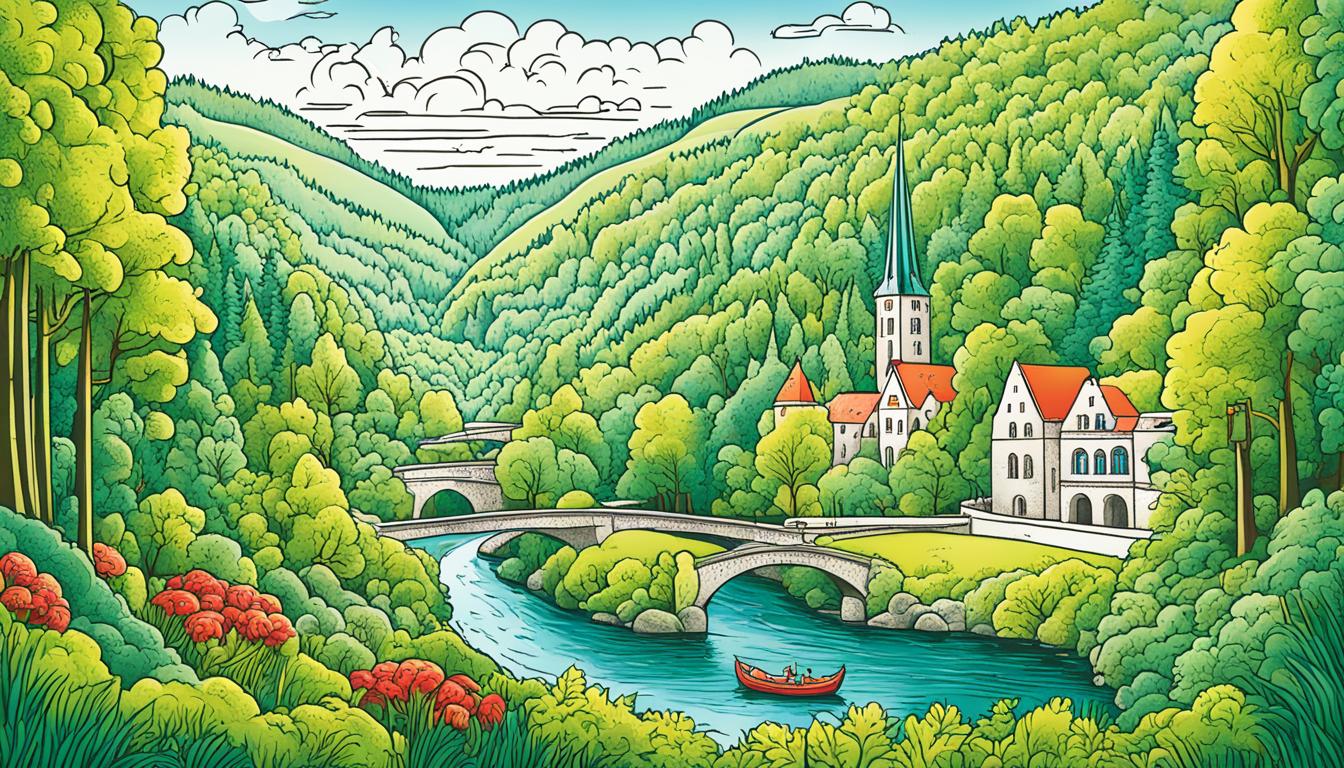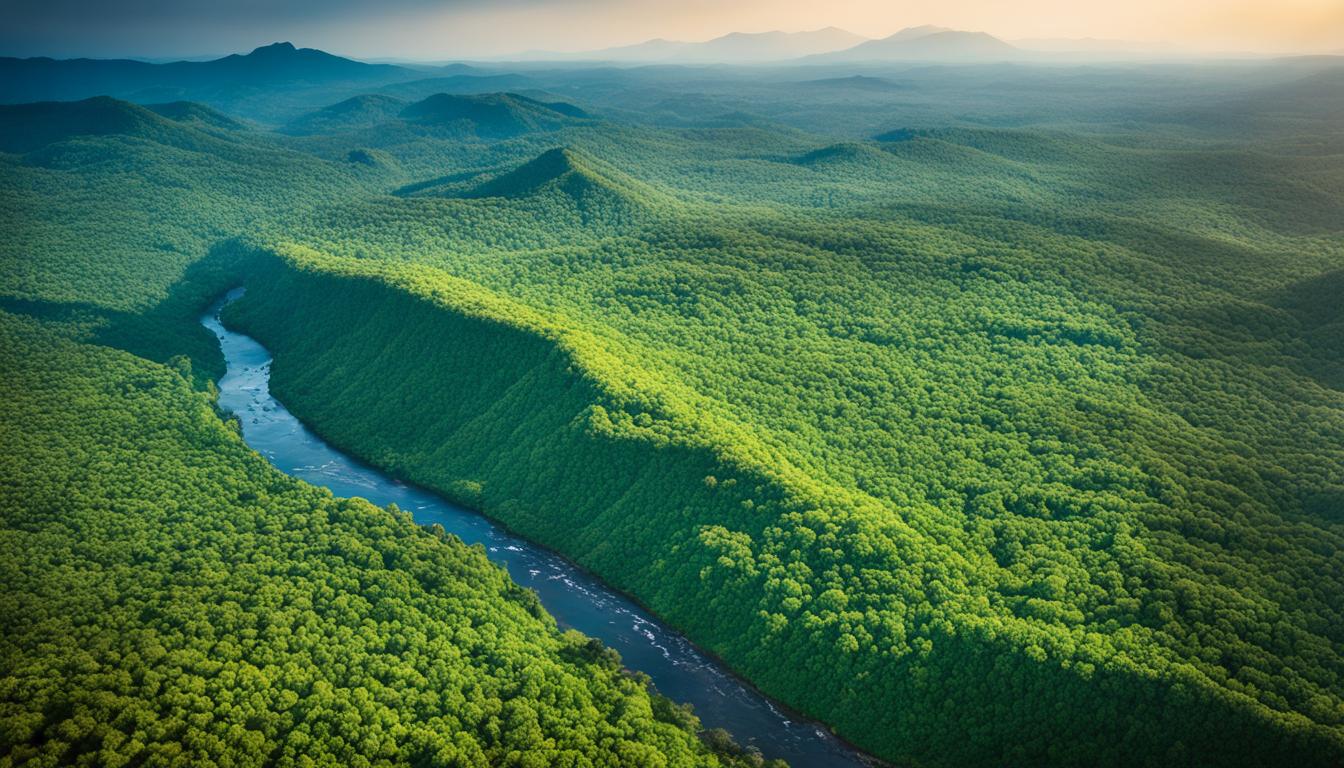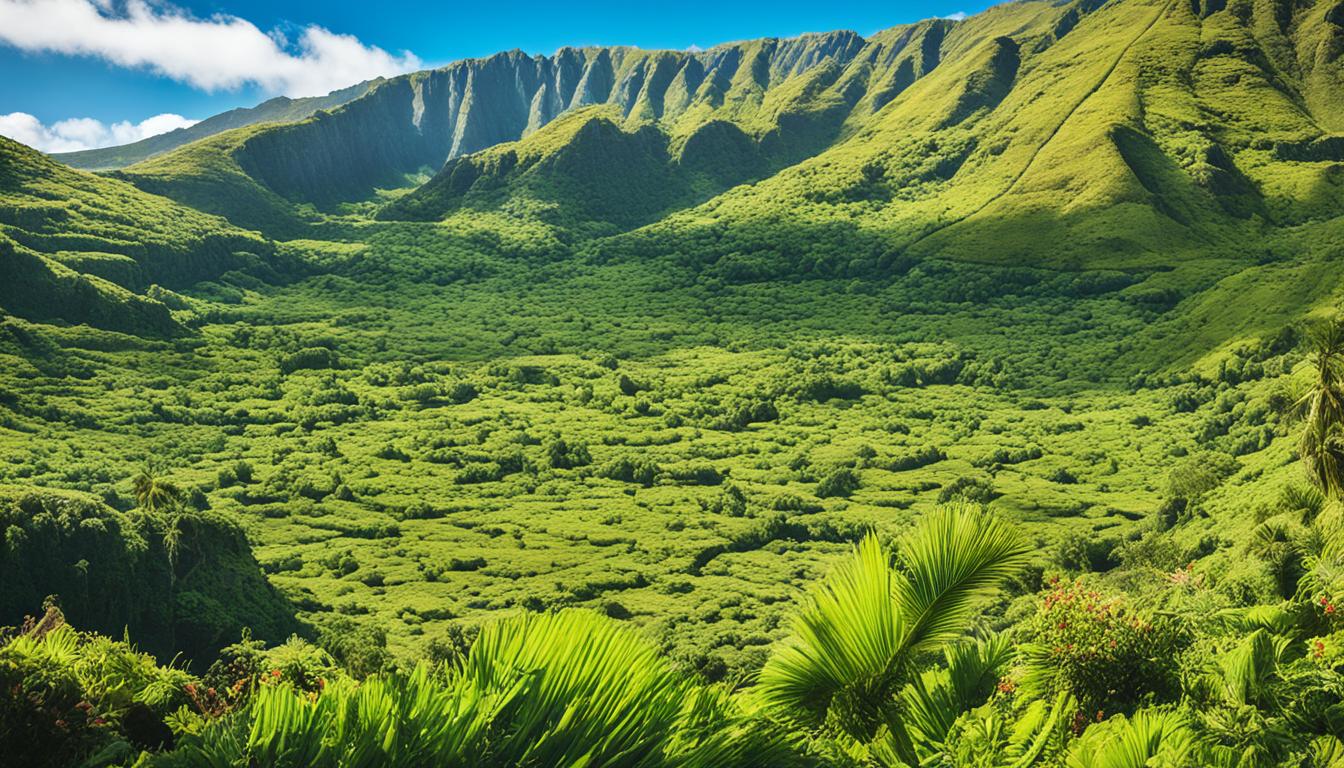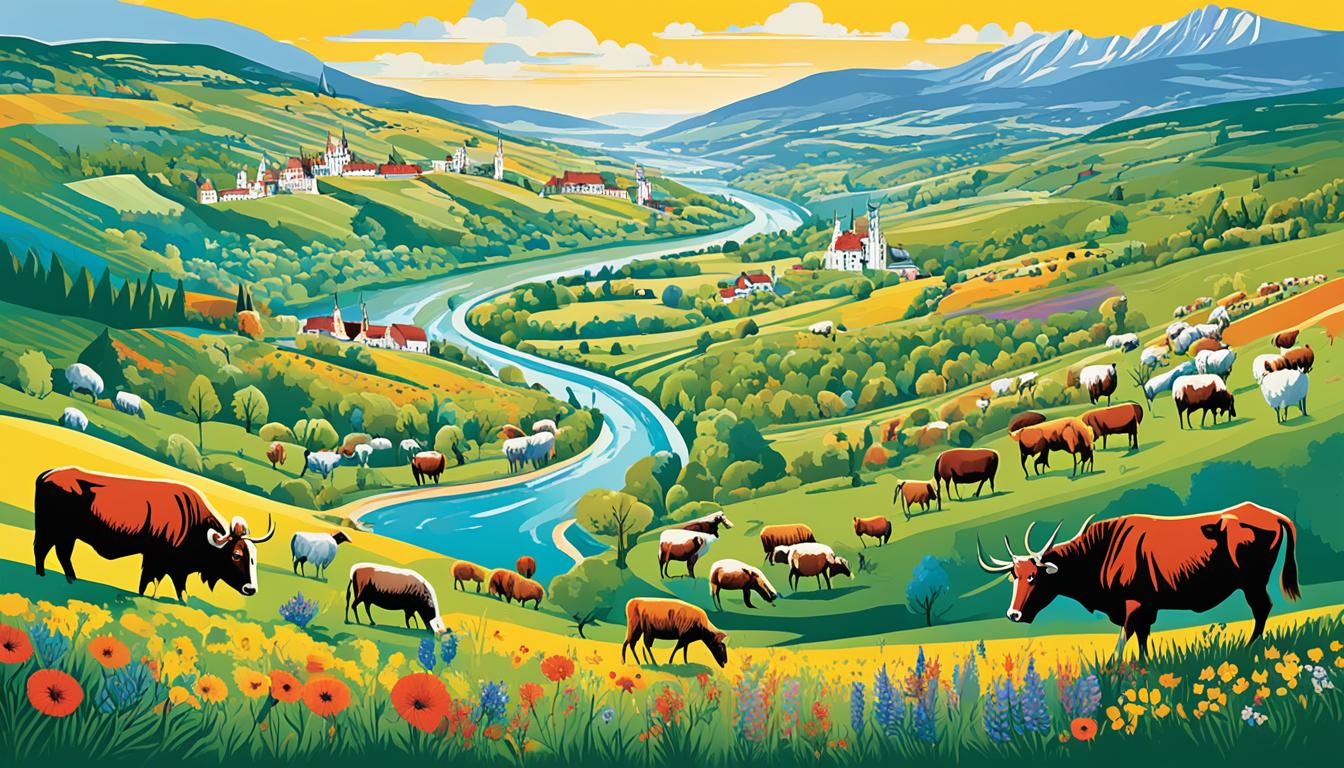Lithuania Sacred Natural Sites and Biodiversity
Did you know that wetlands in Lithuania have lost a staggering 70% of their area due to drainage and peat extraction? And that half of all meadows in the country have been destroyed by land reclamation and the expansion of agricultural land? These unexpected facts highlight the challenges faced by Lithuania in preserving its natural heritage and biodiversity.
Lithuania is blessed with diverse ecosystems, ranging from lush forests to vibrant wetlands, meadows, and urban areas. However, these precious habitats have been significantly impacted by human activities, leading to a decline in biodiversity and the loss of important natural sites.
To address these pressing issues, dedicated efforts are being made in Lithuania to conserve biodiversity and protect sacred natural sites that hold cultural and spiritual significance. Through a combination of conservation initiatives, sustainable practices, and international cooperation, Lithuania aims to safeguard its natural treasures for future generations.
Key Takeaways:
- Lithuania has lost 70% of its wetland areas due to drainage and peat extraction.
- Half of all meadows in Lithuania have been destroyed by land reclamation and agricultural expansion.
- Conservation efforts in Lithuania focus on biodiversity preservation and the protection of sacred natural sites.
- Sustainable practices and international cooperation play key roles in biodiversity conservation in Lithuania.
- Preserving Lithuania’s natural heritage is crucial for maintaining ecological balance and cultural traditions.
The Importance of Biodiversity in Lithuania
Biodiversity is a crucial component of Lithuania’s natural ecosystems, including its forests, wetlands, and meadows. The diverse array of plant and animal species found in these ecosystems provide numerous ecosystem services that are vital for the well-being of both humans and the environment. Understanding the importance of biodiversity in Lithuania allows us to appreciate the essential roles it plays in maintaining ecological balance and sustaining various ecosystem functions.
Lithuania’s ecosystems offer a wide range of ecosystem services, such as carbon sequestration, water purification, and the provision of habitats for numerous species. Forests, in particular, contribute to carbon sequestration by absorbing and storing large amounts of carbon dioxide, mitigating the impacts of climate change. Wetlands play a crucial role in water purification, acting as natural filters that remove pollutants and ensure clean water for both humans and wildlife. Meadows provide essential habitats for pollinators, supporting agricultural production and enhancing biodiversity.
“Biodiversity is the foundation of ecosystem services that support life and provide a range of benefits to society.”
However, Lithuania’s biodiversity is facing significant threats. Habitat loss, primarily due to land use changes and urban development, poses a major risk to many species and ecosystems. The conversion of natural habitats into agricultural land and the expansion of infrastructure result in the fragmentation and destruction of habitats. Pollution from human activities, such as industrial pollution and agricultural runoff, also threatens biodiversity by degrading habitats and affecting the health of species.
Invasive species are another major threat to biodiversity in Lithuania. These non-native species can outcompete native flora and fauna for resources, disrupting ecosystems and causing harm to local biodiversity. Climate change further exacerbates these threats, affecting the distribution and behavior of species and disrupting the delicate balance of ecosystems.
To address these challenges and protect biodiversity, Lithuania has implemented various conservation efforts. The country has established a network of protected areas, such as national parks and nature reserves, that serve as havens for endangered species and habitats. These areas play a crucial role in preserving biodiversity and providing opportunities for research, education, and recreation.
Conservation efforts in Lithuania include:
- Implementing sustainable land management practices to reduce habitat loss and degradation
- Controlling and eradicating invasive species to protect native biodiversity
- Promoting public awareness and education about the importance of biodiversity conservation
- Strengthening international cooperation and partnerships to address transboundary conservation challenges
By prioritizing biodiversity conservation and taking active steps to protect and restore ecosystems, Lithuania aims to safeguard its natural heritage for future generations. The conservation of biodiversity is not only important for the sustainability of ecosystems but also for the well-being and prosperity of society as a whole.
Sacred Natural Sites in Lithuania
Lithuania is blessed with a multitude of sacred natural sites that hold immense cultural and spiritual importance for local communities. These sites, ranging from age-old forests and enchanting rock formations to serene lakes, are regarded as sacred sanctuaries intimately connected to folklore, traditions, and rituals. They serve as hallowed places for worship, meditation, and profound communion with nature. The preservation and safeguarding of these sacred natural sites are of paramount significance in upholding the rich cultural heritage of Lithuania and fostering sustainable practices that honor and respect the land.
One of the most revered sacred natural sites in Lithuania is the Labanoras Regional Park. Located in eastern Lithuania, this vast nature reserve encompasses ancient forests and tranquil lakes, offering visitors a serene and spiritual experience in the heart of nature. Labanoras has long been cherished by locals for its awe-inspiring beauty and its role as a place of spiritual connection.
Within Labanoras Regional Park, the picturesque Labanoras village boasts a mystical lake known as Lake Dringis. Surrounded by lush forests and an ethereal ambiance, this sacred lake is believed to possess powerful healing energy, attracting those seeking solace and spiritual rejuvenation. Visitors are drawn to its tranquil waters, where they can take part in rituals, prayers, or personal reflections in a picturesque and serene setting.
Another significant sacred site in Lithuania is the ancient village of Akmenė. Nestled amidst rolling hills and verdant meadows, Akmenė is renowned for its unique rock formations. These majestic stones, shaped by nature over countless centuries, hold deep spiritual meaning for local communities. The rocks are believed to possess mystical energy and are often used as altars for rituals and ceremonies, connecting people to their ancestral roots and the natural world.
To the south of Lithuania lies the Trejybė Hill, a captivating site of profound spiritual significance. This sacred hill is deeply woven into the fabric of Lithuanian mythology and folklore. It is believed to be a meeting place between the earthly realm and the divine, serving as a conduit for spiritual guidance and transcendence. Visitors flock to Trejybė Hill to pay homage, seek wisdom, and immerse themselves in the spiritual essence of Lithuania’s sacred landscapes.
These sacred natural sites exemplify the deep-rooted connection between the people of Lithuania and their natural surroundings. They offer a sanctuary for spiritual reflection, cultural preservation, and the conservation of ecological diversity. The reverence bestowed upon these sites by generations past and present highlights the enduring spiritual significance and the unique cultural heritage they embody.

Key Sacred Natural Sites in Lithuania
| Sacred Site | Location | Features |
|---|---|---|
| Labanoras Regional Park | Eastern Lithuania | Ancient forests, tranquil lakes |
| Lake Dringis | Labanoras Regional Park | Celebrated for its healing energy |
| Akmenė Village | Rolling hills of Lithuania | Unique rock formations with mystical energy |
| Trejybė Hill | South of Lithuania | A meeting place between earthly and divine realms |
Biodiversity Conservation Efforts in Lithuania
Lithuania is dedicated to conserving biodiversity and safeguarding its natural habitats. Through the establishment of protected areas, such as national parks, nature reserves, and wildlife sanctuaries, the country has created a network that covers a substantial portion of its territory. These protected areas serve as important habitats for a wide variety of plant and animal species, nurturing their populations and ensuring their survival.
Conservation efforts in Lithuania are focused on not only protecting existing habitats but also restoring and managing valuable ecosystems. By actively engaging in the restoration of degraded habitats, Lithuania aims to revitalize these areas and support them in becoming thriving ecosystems once again. This proactive approach helps promote species conservation and creates a more favorable environment for biodiversity to flourish.
Furthermore, Lithuania recognizes the importance of environmental education in promoting a culture of conservation and sustainability. Environmental education initiatives are implemented to raise awareness about the significance of biodiversity and the need to protect it for future generations. These efforts aim to inspire individuals and communities to take action, encouraging them to adopt environmentally friendly practices and contribute to the overall preservation of biodiversity.
Overall, Lithuania’s biodiversity conservation efforts encompass the establishment and management of protected areas, the restoration and preservation of valuable habitats, and the promotion of environmental education. By combining these efforts, Lithuania is actively working towards the long-term conservation of its unique biodiversity and the protection of its natural heritage for the benefit of present and future generations.
Challenges to Biodiversity Conservation in Lithuania
Despite dedicated conservation efforts, Lithuania faces several significant challenges when it comes to preserving its rich biodiversity. These challenges include habitat degradation, invasive species, and the impact of climate change. Ongoing monitoring and adaptive management strategies are required to address these threats and protect Lithuania’s diverse ecosystems.
Habitat Degradation
Habitat degradation, including land reclamation and the expansion of agriculture, is a major concern for biodiversity conservation in Lithuania. As agricultural practices intensify and urban areas expand, natural habitats are lost and fragmented. This loss of habitat has a direct impact on numerous plant and animal species, leading to declines in population and biodiversity.
Invasive Species
Invasive species pose a significant threat to the native flora and fauna of Lithuania. These non-native species outcompete native species for resources and disrupt the balance of ecosystems. Invasive species can also alter the structure and function of habitats, further exacerbating the decline of native biodiversity.
Climate Change Impact
Climate change is another major challenge to biodiversity conservation in Lithuania. Rising temperatures, altered rainfall patterns, and extreme weather events can disrupt ecosystems and impact the distribution and behavior of species. These changes threaten the survival of many plant and animal species and can result in the loss of biodiversity across the country.
Overall, addressing these challenges requires a multifaceted approach that combines habitat restoration, invasive species management, and strategies to mitigate and adapt to climate change. By prioritizing these conservation efforts, Lithuania can ensure the long-term health and vitality of its unique ecosystems and safeguard its precious biodiversity.

| Challenges | Effects |
|---|---|
| Habitat degradation | – Loss and fragmentation of natural habitats – Decline in population and biodiversity |
| Invasive species | – Outcompetition of native species – Disruption of ecosystem balance |
| Climate change impact | – Altered distribution and behavior of species – Threats to species survival – Biodiversity loss |
Successes in Biodiversity Conservation in Lithuania
Despite the challenges, Lithuania has achieved notable successes in biodiversity conservation. The expansion of protected areas, such as national parks, has led to significant protected areas expansion in Lithuania. These protected areas play a crucial role in safeguarding habitats and species, ensuring their long-term survival.
Efforts to conserve specific species have also yielded positive results. For instance, focused conservation actions have contributed to the species recovery in Lithuania, with populations rebounding. A prime example is the successful recovery of salmon populations in the country’s rivers, a testament to the effectiveness of targeted conservation measures.
Moreover, Lithuania has witnessed advancements in sustainable agriculture practices, including the adoption of organic farming methods. Sustainable agricultural practices promote biodiversity conservation by reducing the use of harmful chemicals and fostering the natural balance of ecosystems.
These conservation successes are the outcome of collaborative efforts between government agencies, local communities, and conservation organizations in Lithuania. Continued partnerships and cooperation are pivotal in achieving biodiversity conservation successes in Lithuania and ensuring the preservation of the country’s natural heritage.

The Role of Local Communities in Biodiversity Conservation
Local communities play a vital role in biodiversity conservation in Lithuania. The collective knowledge and practices passed down through generations contribute to the understanding and preservation of local ecosystems.
Many local communities are actively involved in conservation initiatives, including habitat restoration, species monitoring, and environmental education. Their efforts play a crucial role in safeguarding the diverse flora and fauna that inhabit Lithuania’s natural landscapes.
Community involvement biodiversity conservation is key to the success of conservation efforts. By actively participating in local conservation initiatives Lithuania, communities become stewards of the land, ensuring the preservation of biodiversity for future generations.
While Lithuania does not have indigenous communities in the traditional sense, individuals carrying traditional knowledge Lithuania and cultural practices contribute significantly to the conservation efforts. Their wisdom and expertise, rooted in an intimate relationship with the land, offer unique insights into sustainable practices that harmonize with nature.
Local communities are also instrumental in raising awareness among residents and visitors alike. Through environmental education programs, they promote a sense of responsibility and inspire others to actively engage in biodiversity conservation.
By involving and empowering local communities, Lithuania fosters a sense of ownership and shared responsibility for the protection and management of its natural resources.
Indigenous communities have long recognized the interconnectedness of all living beings and their habitats. As we strive to conserve Lithuania’s ecological diversity, we can learn valuable lessons from their local conservation initiatives Lithuania that promote harmony between human activities and the environment.
Examples of Community Involvement in Biodiversity Conservation
To illustrate the active role of local communities in biodiversity conservation, here are a few inspiring examples:
- A group of fishermen in a coastal village actively monitors and reports sightings of an endangered seabird species, helping researchers gain insights into its nesting habits and migration patterns.
- Rural communities engage in sustainable farming practices, preserving traditional agricultural landscapes and protecting genetic diversity of crop plants and domestic animal breeds.
- A local conservation group organizes guided nature walks and educational workshops to raise awareness about the importance of preserving wetland habitats and the unique species that rely on these ecosystems.
- Traditional storytellers share ancient tales that highlight the interconnectedness of all living beings and foster an appreciation for the natural world.
These collaborative efforts between communities and conservation organizations demonstrate the profound impact that community involvement can have on biodiversity conservation.
A Community-Driven Approach
Recognizing the crucial role that local communities play, it is essential to embrace a community-driven approach to biodiversity conservation. This approach involves:
- Involving communities in decision-making processes regarding the management and conservation of natural areas.
- Respecting and integrating traditional knowledge into scientific research and conservation strategies.
- Providing support and resources to enable communities to initiate and sustain local conservation efforts.
This collaborative approach ensures that conservation initiatives are rooted in local contexts and priorities, leading to more effective and sustainable results.
Furthermore, by engaging with local communities, biodiversity conservation efforts become more inclusive and diverse, creating a sense of shared responsibility and fostering long-term commitment to protecting Lithuania’s unique natural heritage.
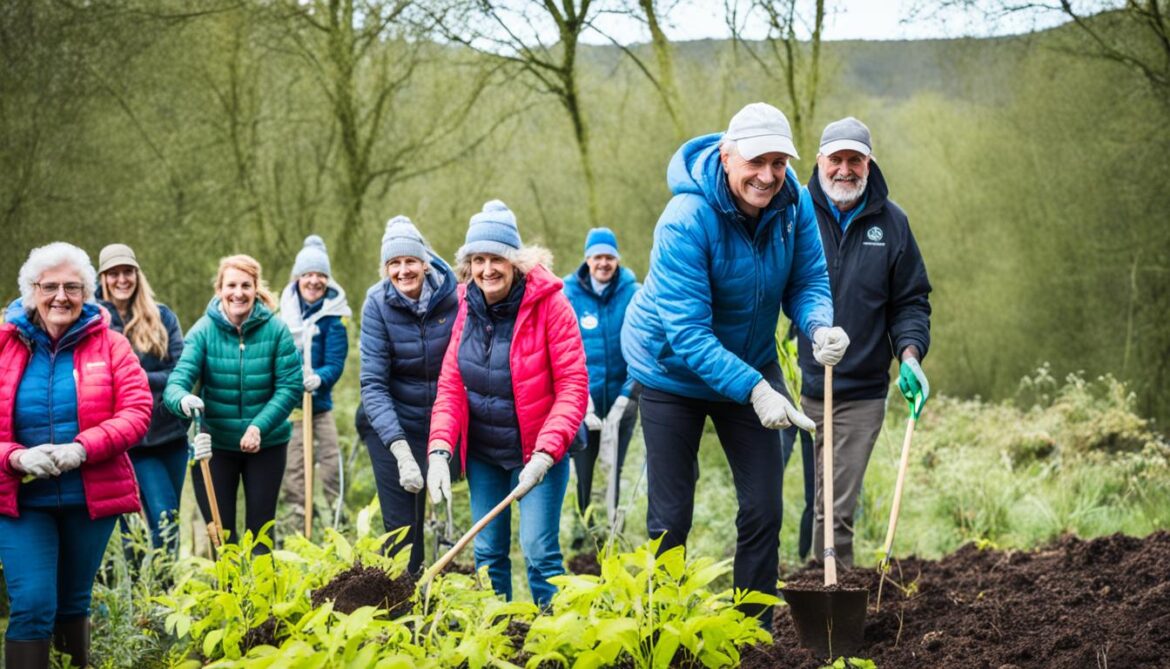
International Cooperation in Biodiversity Conservation
Biodiversity conservation is a global endeavor that recognizes the interconnectedness of ecosystems and the need for collaborative efforts. In this regard, Lithuania actively engages in international conservation initiatives and partnerships to address global challenges in biodiversity conservation.
Through cross-border collaborations with neighboring countries and international organizations, Lithuania strives to protect shared ecosystems and species. These transboundary conservation efforts focus on ensuring the sustainable management and conservation of natural resources within and beyond national boundaries.
Lithuania’s commitment to international cooperation is further demonstrated through its alignment with European Union biodiversity initiatives. By participating in various EU conservation programs, Lithuania contributes to the collective efforts to protect and conserve biodiversity on a regional and global scale.
In partnership with other nations and organizations, Lithuania works towards the shared goal of safeguarding biodiversity for present and future generations.
| Benefits of International Cooperation in Biodiversity Conservation |
|---|
| Enhanced exchange of knowledge and best practices |
| Increased capacity for research and monitoring |
| Collaborative conservation planning and implementation |
| Efficient use of resources through shared efforts |
| Strengthened political commitment to conservation |
International cooperation in biodiversity conservation is vital in addressing the shared responsibility of protecting our planet’s precious natural heritage. Through conservation partnerships, transboundary efforts, and collaboration with the EU and other international entities, Lithuania actively contributes to the global conservation agenda and strives to create a sustainable future for biodiversity.
The Benefits of Biodiversity Conservation
Biodiversity conservation in Lithuania offers a multitude of advantages for society and the natural world. By protecting and preserving diverse ecosystems and species, we can enjoy various ecosystem services that are vital for our well-being and economic development.
Ecosystem services, such as clean air and water, pollination, and climate regulation, are essential for maintaining a healthy environment and sustaining human life. Clean air and water contribute to our physical health and the functioning of ecosystems, while pollination ensures the reproduction of numerous plants, including those that provide us with food. Climate regulation, which includes carbon sequestration and temperature regulation, helps mitigate the impacts of climate change and maintain a stable climate.
Biodiversity conservation also plays a vital role in preserving cultural heritage. Lithuania’s natural sites and diverse ecosystems hold cultural value, often linked to traditional practices and sacred sites. Conserving biodiversity ensures the continuation of these cultural traditions, providing a sense of identity and belonging. It allows us to appreciate the beauty and significance of our surroundings, strengthening cultural connections and fostering a sense of pride in our unique natural heritage.
Furthermore, biodiversity conservation promotes the resilience and adaptability of ecosystems, enabling them to withstand environmental changes. A diverse range of species ensures that ecosystems can respond to disturbances and maintain their ecological balance. This resilience is particularly important in the face of challenges such as habitat loss, climate change, and invasive species. Protecting and restoring biodiversity helps to safeguard the ecological processes and functions that are crucial for the long-term survival of ecosystems.
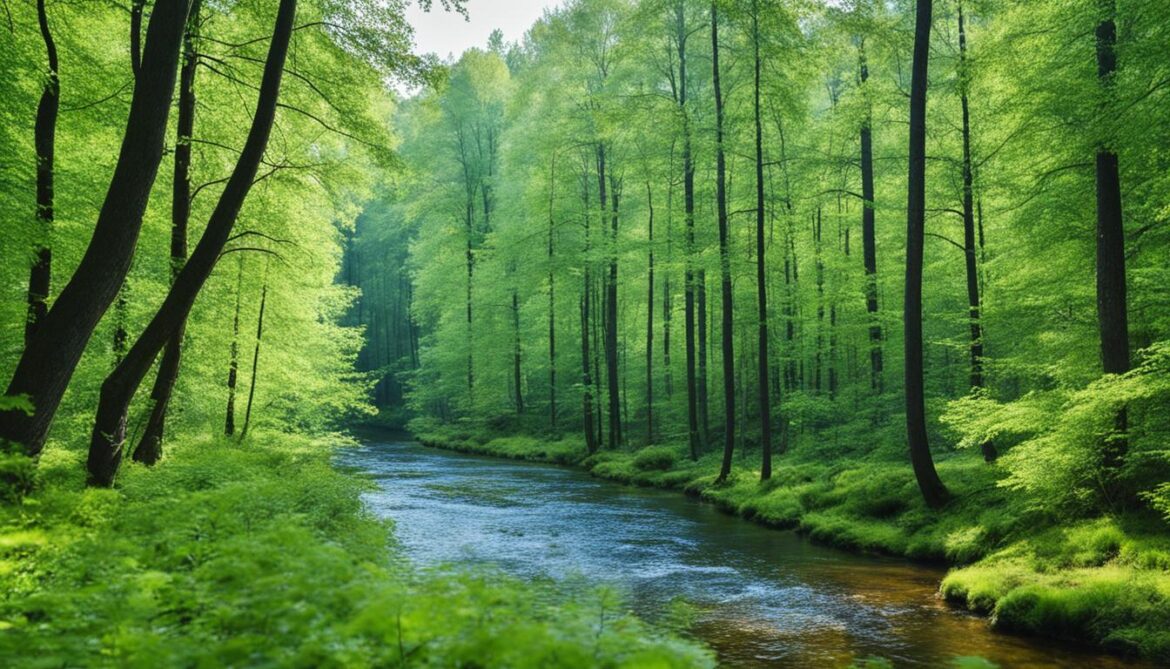
“Conserving biodiversity ensures the continuation of cultural traditions, providing a sense of identity and belonging.”
The recognition of the economic value of biodiversity is also essential. Biodiversity supports various industries and sectors, such as agriculture, tourism, and pharmaceuticals. Sustainable agricultural practices rely on healthy ecosystems and diverse habitats for crop pollination, pest control, and soil fertility. The beauty and uniqueness of Lithuania’s natural landscapes attract tourists, contributing to the country’s economy. Additionally, many pharmaceutical products are derived from natural sources, including plants and microorganisms, highlighting the economic potential of biodiversity.
Overall, biodiversity conservation offers a range of benefits, from the provision of ecosystem services that are crucial for our well-being, to the preservation of cultural heritage and the economic value of biodiversity. By recognizing these benefits and actively promoting the conservation of our natural world, Lithuania can foster sustainable development and create a better future for both humans and the diverse ecosystems that support us.
Future Perspectives on Biodiversity Conservation in Lithuania
The future of biodiversity conservation in Lithuania relies on continued commitment and action. As the country seeks to strike a balance between development and environmental preservation, sustainable development practices incorporating conservation principles will play a crucial role in ensuring the long-term viability of ecosystems and species.
Policy initiatives, such as the National Biodiversity Conservation Strategy and Action Plan, provide a comprehensive framework for conservation efforts. These initiatives guide the implementation of targeted measures to protect and restore habitats, promote sustainable land use practices, and conserve endangered species.
However, effective biodiversity conservation goes beyond policies. Public awareness and engagement are equally important in driving positive change. By promoting a culture of conservation and sustainable living, individuals and communities can actively contribute to biodiversity conservation efforts.
“The future of wildlife conservation lies in our hands. By educating ourselves, raising awareness, and taking action, we can protect the biodiversity that makes Lithuania unique.” – Dr. Elena Petrova, Environmental Scientist
Public education and outreach programs, such as nature walks, workshops, and citizen science projects, can enhance public understanding of the value of biodiversity and empower individuals to make a difference in their daily lives. Additionally, fostering partnerships between stakeholders, including government agencies, NGOs, and local communities, can amplify conservation efforts and create a united front in safeguarding Lithuania’s natural heritage.
By working together, Lithuania can not only protect its unique biodiversity but also contribute to global efforts to conserve and restore ecosystems. By championing sustainable development, implementing effective policies, and fostering public awareness and engagement, Lithuania can secure a brighter future for its precious natural resources.
Policy Initiatives for Biodiversity Conservation in Lithuania
| Policy Initiatives | Description |
|---|---|
| National Biodiversity Conservation Strategy and Action Plan | A comprehensive framework guiding conservation efforts, including habitat protection, sustainable land use, and species conservation. |
| Sustainable Development Goals | Lithuania’s commitment to achieving the United Nations’ Sustainable Development Goals, including Goal 15: Life on Land, which aims to protect and restore ecosystems and halt biodiversity loss. |
| Environmental Impact Assessment | Mandatory assessments conducted for development projects to minimize and mitigate potential negative impacts on biodiversity and natural habitats. |
| Nature Conservation Legislation | A comprehensive legal framework that sets out provisions for protected areas, species conservation, and wildlife management. |
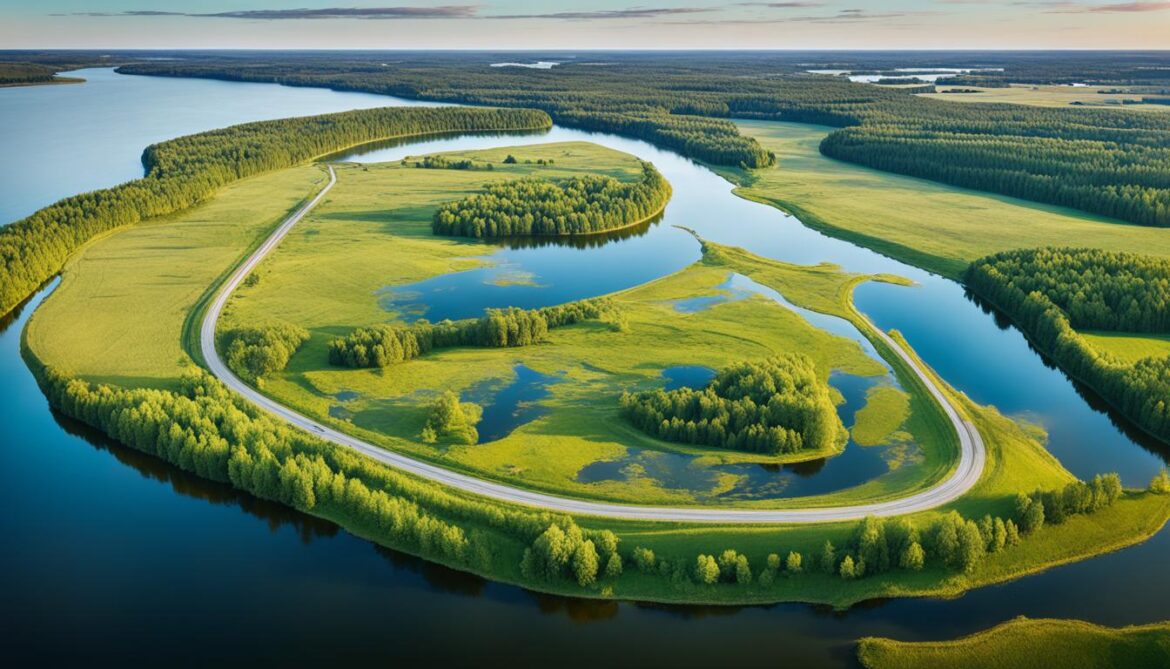
In conclusion, with sustainable development practices, robust policy initiatives, public awareness, and active engagement, Lithuania can pave the way for the preservation of its unique natural heritage and contribute to global efforts to protect biodiversity.
Case Studies of Successful Biodiversity Conservation Projects in Lithuania
Lithuania has witnessed remarkable success in the implementation of various biodiversity conservation projects, showcasing the country’s commitment to preserving its natural heritage. These projects encompass a range of initiatives, including habitat restoration and species reintroduction, that have yielded significant positive outcomes for biodiversity conservation in Lithuania.
Habitat Restoration Projects
One notable success story is the reforestation of degraded areas, which has played a crucial role in restoring and expanding forest habitats. Through meticulous planning and strategic planting, degraded land has been transformed into vibrant forests that support diverse flora and fauna. These habitat restoration projects have not only enhanced the ecological balance but have also provided valuable habitats for native species.
Species Reintroduction Efforts
Another significant accomplishment in biodiversity conservation is the successful reintroduction of endangered species in Lithuania. The European bison, once on the brink of extinction, has experienced a remarkable recovery through targeted conservation initiatives. Thanks to extensive breeding programs and careful management, the population of European bison has increased, showcasing the effectiveness of species reintroduction as a conservation tool.
Similarly, the reintroduction of the otter has been a resounding success. Through habitat restoration, reduced pollution, and careful monitoring, the otter population has rebounded in Lithuania’s waterways. These reintroduction programs highlight the importance of conservation efforts in preserving and protecting endangered species.
“The reforestation of degraded areas and the successful reintroduction of endangered species in Lithuania are shining examples of the positive outcomes that can be achieved through dedicated conservation efforts.” – Conservation Expert
These case studies serve as inspirational examples, demonstrating the power of investments in biodiversity conservation projects. They emphasize the importance of continued support and resources for such initiatives to ensure the long-term success of conservation efforts in Lithuania.
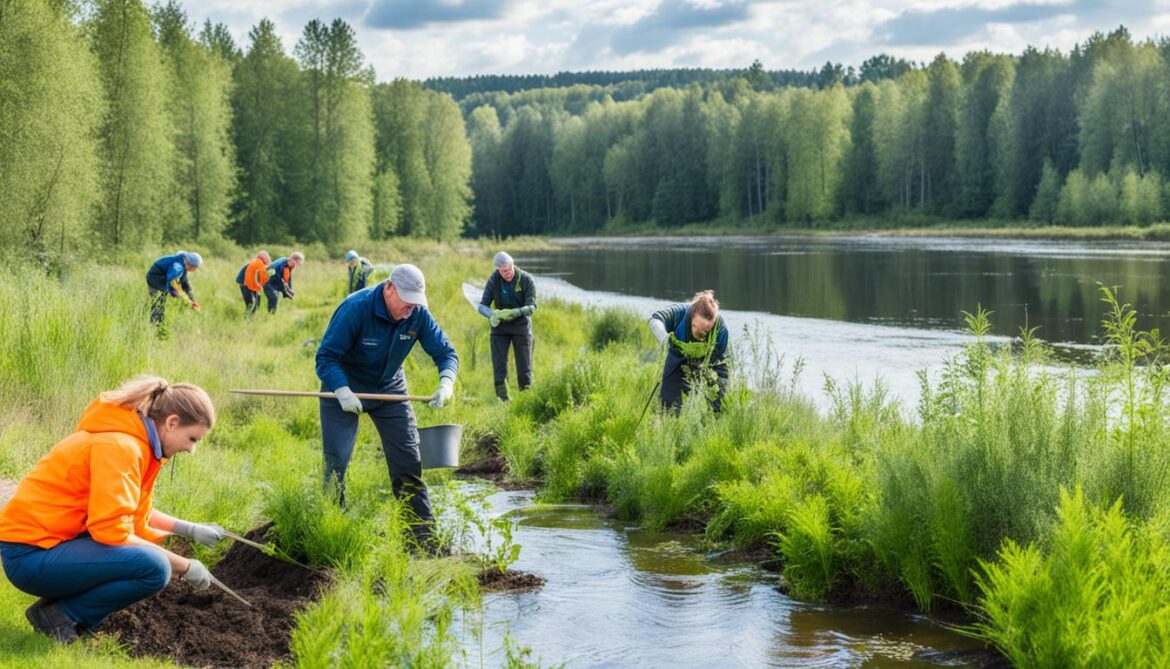
Continued investment in habitat restoration projects and species reintroduction programs is crucial for maintaining and enhancing Lithuania’s biodiversity. These initiatives not only contribute to the conservation of vulnerable ecosystems and species but also support the country’s commitment to sustainable development and the preservation of its natural heritage.
Conclusion
Lithuania’s sacred natural sites and biodiversity are invaluable treasures that form an essential part of the country’s ecological and cultural heritage. The conservation of these sites and the protection of biodiversity are crucial for maintaining the delicate balance of ecosystems, preserving age-old cultural traditions, and promoting sustainable practices. Despite the challenges faced, Lithuania has made substantial strides in biodiversity conservation through the establishment of protected areas, species recovery programs, and the adoption of sustainable agricultural methods. However, the long-term success of these efforts relies on collaborative partnerships, active involvement of local communities, and international cooperation.
By engaging in these conservation initiatives, Lithuania can secure a prosperous future that not only recognizes the significance of its sacred natural sites and diverse ecosystems but also prioritizes their preservation. Continued commitment to safeguarding these natural wonders will help ensure the sustainable development of the country and contribute to global biodiversity conservation goals. The journey towards a harmonious coexistence between humans and nature begins with the conservation of Lithuania’s sacred natural sites and biodiversity.
In summary, Lithuania is taking commendable steps to conserve and protect its sacred natural sites and biodiversity. The establishment of protected areas, initiatives for species recovery, and the implementation of sustainable agricultural practices have already yielded positive outcomes. To build upon these achievements, it is crucial to foster ongoing cooperation, engage local communities, and strengthen international partnerships. With a united effort, Lithuania can continue to serve as a model for biodiversity conservation, providing inspiration and guidance for other nations in their conservation endeavors.




